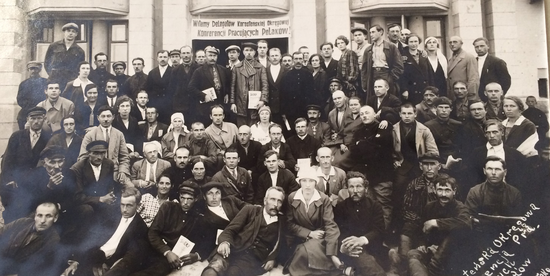
PRIMA-Project by Prof. Olena Palko"Red Tower of Babel: Soviet minorities experiment in interwar Ukraine"
«Red Tower of Babel: Soviet minorities experiment in interwar Ukraine»
During the 1920s, Soviet authorities initiated and implemented a unique set of policies and initiatives towards national groups. It was designed to propagate national differences and provide each ethnic group, no matter how small, with equal access to state and party institutions, judicial defence, and education in native languages. By employing this strategy, Soviet leadership aimed to secure the loyalty of its ethnically diverse population, and engage them into its socialist project. With this purpose in mind, Soviet officials classified society along ethnic lines and contributed greatly to the construction of ethnic identities that would come to outlive their creators. The resultant ‘mobilisation of ethnicity’, however, had an opposite effect; ethnic minorities started to use their status to voice opposition to the state. It would take less than a decade for Soviet authorities to reverse their policies and respond with violence, subjecting its minority populations to russification, ethnic terror, and deportations.
The proposed project builds upon the existing scholarship to provide a unique account of the Soviet minority experiment as designed and implemented during the 1920s-early 1930s within the borders of Soviet Ukraine. Soviet Ukraine provides a unique case study: with its multi-ethnic and multi-confessional character, previous experience of national – Ukrainian and of other minorities – movements, proximity to the Western border it was perhaps the only Soviet republic in which Soviet domestic and foreign concerns mutated and reinforced each other. Afterwards, Soviet Ukraine served as a trendsetting laboratory for Soviet minorities policy Union-wide.
Unlike most studies on the Soviet nationality policy, this project makes Soviet ethnic minorities its primary focus, scrutinising the Soviet minority experiment at various levels of power, from top to bottom. First, at the top-state level, the project seeks to answer the question of how the vision of an ethnically defined and segregated society was determined, devised and communicated. Second, at the middle local level it studies how local party officials and minority specialist translated the state-imposed vision of ethnic proliferation to the local conditions— often chaotic and indifferent to ethnic categories. Lastly, at the bottom level it looks at the way education and cultural workers adapted and carried out those programmes on the ground, and investigates—using the few available memoirs and sources on public opinion from the time— how people digested the new ethnic regime and adapted (if at all) their everyday life to the new expectations. While few existing studies look at certain minority groups, this research aims to provide a first of its kind comprehensive study of the Soviet minority regime based on a variety of primary sources both from central and local archives. The Soviet minorities policies are set against the contemporary international attempts to provide protection and guarantee legal and cultural status to national minorities under the Versailles system and the League of Nations. While the Soviet Union was not a part of this international arrangements, its minorities policies present a unique case in the interwar minority protection regime.
The study is centred around the examination of three main strategies of the Soviet government that concerned national minorities. The first one is the strategy of a Soviet ‘civilising mission’, which determines the role that various national minorities were to play in the Soviet desire to fight backwardness and modernise the country. The second is the strategy of ethnic proliferation, which concerns the very process of defining and implementing the minorities experiment both centrally and on the ground, in terms of territorialisation of ethnicity, education in native languages, promotion of native language and cultures and pro-minority recruitment. The third is the strategy of ethnic equalisation, where I seek to solve the puzzle of the simultaneous pursuit of nation building and nation destroying in the Stalinist period.
The primary material gathered by the project, combined with its theoretical framing and comprehensive perspective, will form a significant and original contribution to the historiography of the Soviet and Eastern European interwar-period studies. Moreover, in the light of recent extreme politicisation of the issue of minority rights and their protection in Ukraine, the study of the ‘ethnic renaissance’ of the 1920s problematises the Soviet legacy in Ukraine in search of historical parallels, possible scenarios for managing ethnic tensions, as well as lessons for the state and other decision-making bodies on how to promote ethnic diversity.
